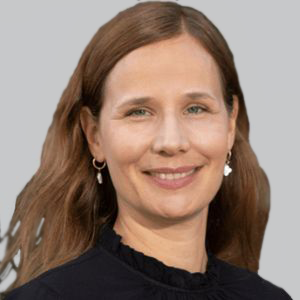Article
Women Experience Greater Effects, Associated Symptoms of Cluster Headache
Author(s):
Between sexes, females with cluster headache reported longer bouts than male participants and used prophylactic treatment more often, as well as higher rates of diurnal rhythmicity.
Andrea C. Belin, PhD

Findings from a Swedish-based cohort study of patients with cluster headache found several differences in triggers, treatment, and lifestyle in women vs men, with data suggesting that women generally may be more gravely affected by the condition.
From 2014 to 2020, 874 study participants identified by screening medical records were included in the analysis, 575 (66%) of which were male and 299 (34%) were women. In the trial, the proportion of men with chronic cluster headache was lower than for women (9.4% vs 18.4%; odds ratio [OR], 0.46; 95% CI, 0.31-0.70; P = .0002). Additionally, pain intensity was reported equally high for both sexes, and associated symptoms occurred similarly except for ptosis (47.0% vs 60.5%; OR, 0.58; 95% CI, 0.43-0.76; P = .0002) as well as restlessness (45.6% vs 53.9%; OR, 0.72; 95% CI, 0.54-0.95; P = .024) which were both more common in women.
Although widely considered a men-dominate disorder, it had been previously suggested that women may display a more severe phenotype. The study, conducted by senior investigator Andrea C. Belin, PhD, Department of Neuroscience, Karolinska Institutet, and colleagues, assessed sex differences in patient demographics, clinical phenotype, chronobiology, triggers, treatment, and lifestyle. Each patient answered a detailed questionnaire on clinical information and lifestyle, and all variables were compared with regards to sex.
Although there was no age difference at cluster headache onset, a lower proportion of men had onset occur below the age of 20 years (16.2% vs 23.0%; OR, 0.64; 95% CI, 0.44-0.92; P = .020). Regarding family history, significantly fewer men than women had a first- or -second-degree relative also diagnosed with cluster headache (7.1% vs 15.4%; OR, 0.42; 95% CI, 0.27-0.66; P = .0002). Additionally, self-reported migraine was reportedly lower among men than women (12.5% vs 29.4%; OR, 0.34; 95% CI, 0.24-0.49; P <.0001).
"Cluster headache is still often misdiagnosed in females, perhaps because certain features of the disease in female patients resemble a migraine-like phenotype," Belin et al wrote. "It is therefore of utmost importance for physicians to be aware of these sex differences when working in the clinic and meeting headache patients to be able to give the most effective treatment as fast as possible."
READ MORE: Supportive Self-Management Program Shows No Efficacy in Improving QOL for Chronic Migraine
Between the 2 groups, diurnal rhythmicity of attacks was less common in men with cluster headache than women (63.3% vs 73.6%; OR, 0.62; 95% CI, 0.46-0.85; P = .002). Over a 24-hour period, the number of attacks per 2-hour time interval differed between men and women (P = .002) with a higher frequency of nightly attacks in women. In terms of self-reported chronotype, women tended to be morning types while men tended to describe themselves as evening types (P = .046). Overall, there was a difference in chronotypes by sex and age (P = .001).
In at least 90% of both populations, abortive medications were used; however, the findings showed less frequent use of oxygen by men compared with women (27.8% vs 36.5%; OR, 0.67; 95% CI, 0.49-0.92; P = .013). Additionally, significantly fewer men used preventive medication than women (47.7% vs 60.2%; OR, 0.60; 95% CI, 0.45-0.80; P = .00005), although the use of prophylactic medications did not differ between the sexes.
After being asked to list any possibly triggers that could elicit a cluster headache attack, there were no significant differences in the reported factors between men and women (49.2% vs 54.5%; P = .15). Alcohol was by far the most listed trigger among participants who reported trigger factors for their attacks (50.7%), and menm reported more often than women that alcohol provoked a cluster headache attack (56.5% vs. 40.5%, OR, 1.91; 95% CI, 1.29–2.81; P = 0.001).




